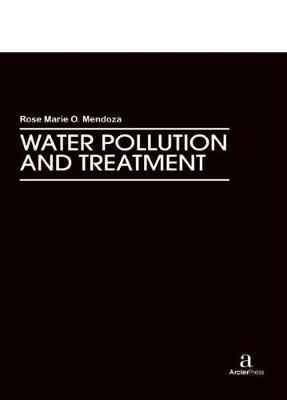Water is typically referred to as polluted when it is impaired by anthropogenic contaminants and either does not support a human use, such as drinking water, or undergoes a marked shift in its ability to support its constituent biotic communities, such as fish. Natural phenomena such as volcanoes, algae blooms, storms, and earthquakes also cause major changes in water quality and the ecological status of water.
Point source water pollution refers to contaminants that enter a waterway from a single, identifiable source, such as a pipe or ditch. Examples of sources in this category include discharges from a...Read more
Water is typically referred to as polluted when it is impaired by anthropogenic contaminants and either does not support a human use, such as drinking water, or undergoes a marked shift in its ability to support its constituent biotic communities, such as fish. Natural phenomena such as volcanoes, algae blooms, storms, and earthquakes also cause major changes in water quality and the ecological status of water.
Point source water pollution refers to contaminants that enter a waterway from a single, identifiable source, such as a pipe or ditch. Examples of sources in this category include discharges from a sewage treatment plant, a factory, or a city storm drain. Nonpoint source pollution refers to diffuse contamination that does not originate from a single discrete source. NPS pollution is often the cumulative effect of small amounts of contaminants gathered from a large area. A common example is the leaching out of nitrogen compounds from fertilized agricultural lands. Nutrient runoff in storm water from "sheet flow" over an agricultural field or a forest are also cited as examples of NPS pollution. We know that pollution is a human problem because it is a relatively recent development in the planet's history: before the 19th century Industrial Revolution, people lived more in harmony with their immediate environment. As industrialization has spread around the globe, so the problem of pollution has spread with it. When Earth's population was much smaller, no one believed pollution would ever present a serious problem. It was once popularly believed that the oceans were far too big to pollute. Today, with around 7 billion people on the planet, it has become apparent that there are limits. Pollution is one of the signs that humans have exceeded those limits. Freshwater resources are gradually becoming polluted and unavailable due to human or industrial activities. The increasing contamination of freshwater systems with thousands of industrial and natural chemical compounds is one of the key environmental problems facing humanity worldwide. The ever increasing world populations and rapidly advancing industrialization is causing more demand than ever for the dwindling supply of water, which makes it precious in more and more countries. In some parts of the world, water is a crucial commodity. Clearly, there is an urgent need to create awareness for pressing environmental problems and to develop solutions in close cooperation between science, governments, industry, and other relevant stakeholders. The development in the area of water treatment has to reach the real applications where needed as early as possible.
Point source water pollution refers to contaminants that enter a waterway from a single, identifiable source, such as a pipe or ditch. Examples of sources in this category include discharges from a sewage treatment plant, a factory, or a city storm drain. Nonpoint source pollution refers to diffuse contamination that does not originate from a single discrete source. NPS pollution is often the cumulative effect of small amounts of contaminants gathered from a large area. A common example is the leaching out of nitrogen compounds from fertilized agricultural lands. Nutrient runoff in storm water from "sheet flow" over an agricultural field or a forest are also cited as examples of NPS pollution. We know that pollution is a human problem because it is a relatively recent development in the planet's history: before the 19th century Industrial Revolution, people lived more in harmony with their immediate environment. As industrialization has spread around the globe, so the problem of pollution has spread with it. When Earth's population was much smaller, no one believed pollution would ever present a serious problem. It was once popularly believed that the oceans were far too big to pollute. Today, with around 7 billion people on the planet, it has become apparent that there are limits. Pollution is one of the signs that humans have exceeded those limits. Freshwater resources are gradually becoming polluted and unavailable due to human or industrial activities. The increasing contamination of freshwater systems with thousands of industrial and natural chemical compounds is one of the key environmental problems facing humanity worldwide. The ever increasing world populations and rapidly advancing industrialization is causing more demand than ever for the dwindling supply of water, which makes it precious in more and more countries. In some parts of the world, water is a crucial commodity. Clearly, there is an urgent need to create awareness for pressing environmental problems and to develop solutions in close cooperation between science, governments, industry, and other relevant stakeholders. The development in the area of water treatment has to reach the real applications where needed as early as possible.
- ISBN13 9781680946291
- Publish Date 30 November 2016
- Publish Status Active
- Publish Country CA
- Imprint Arcler Education Inc
- Format Hardcover
- Pages 279
- Language English
